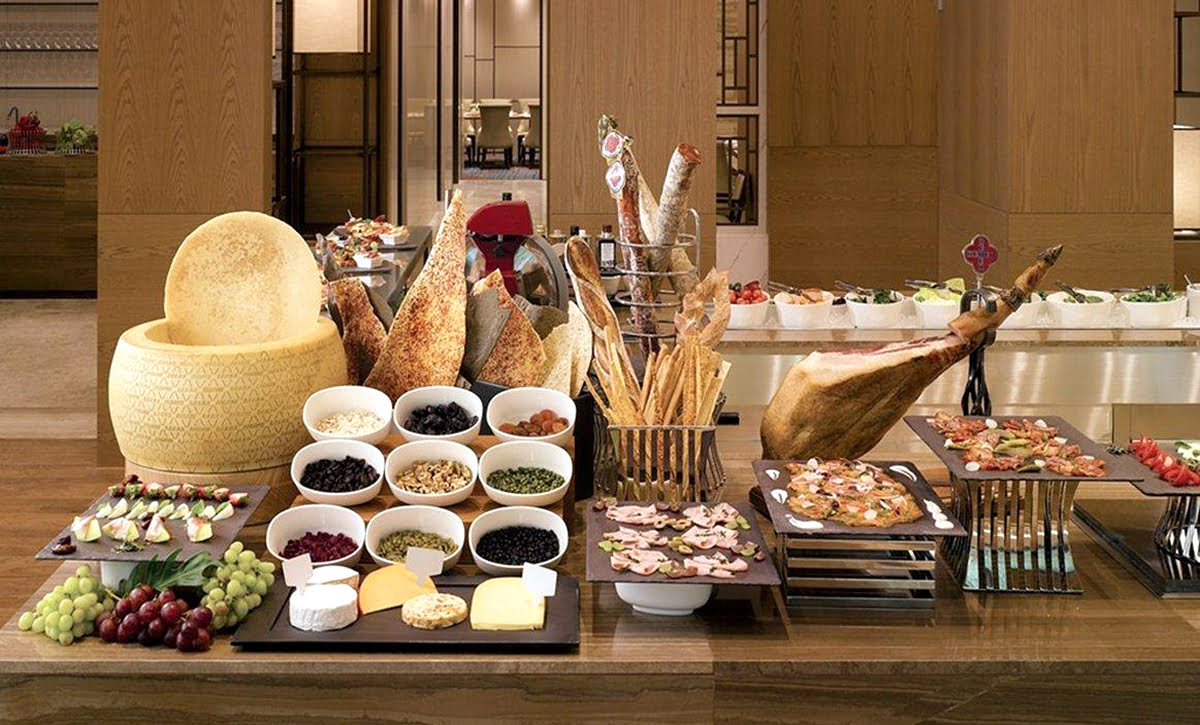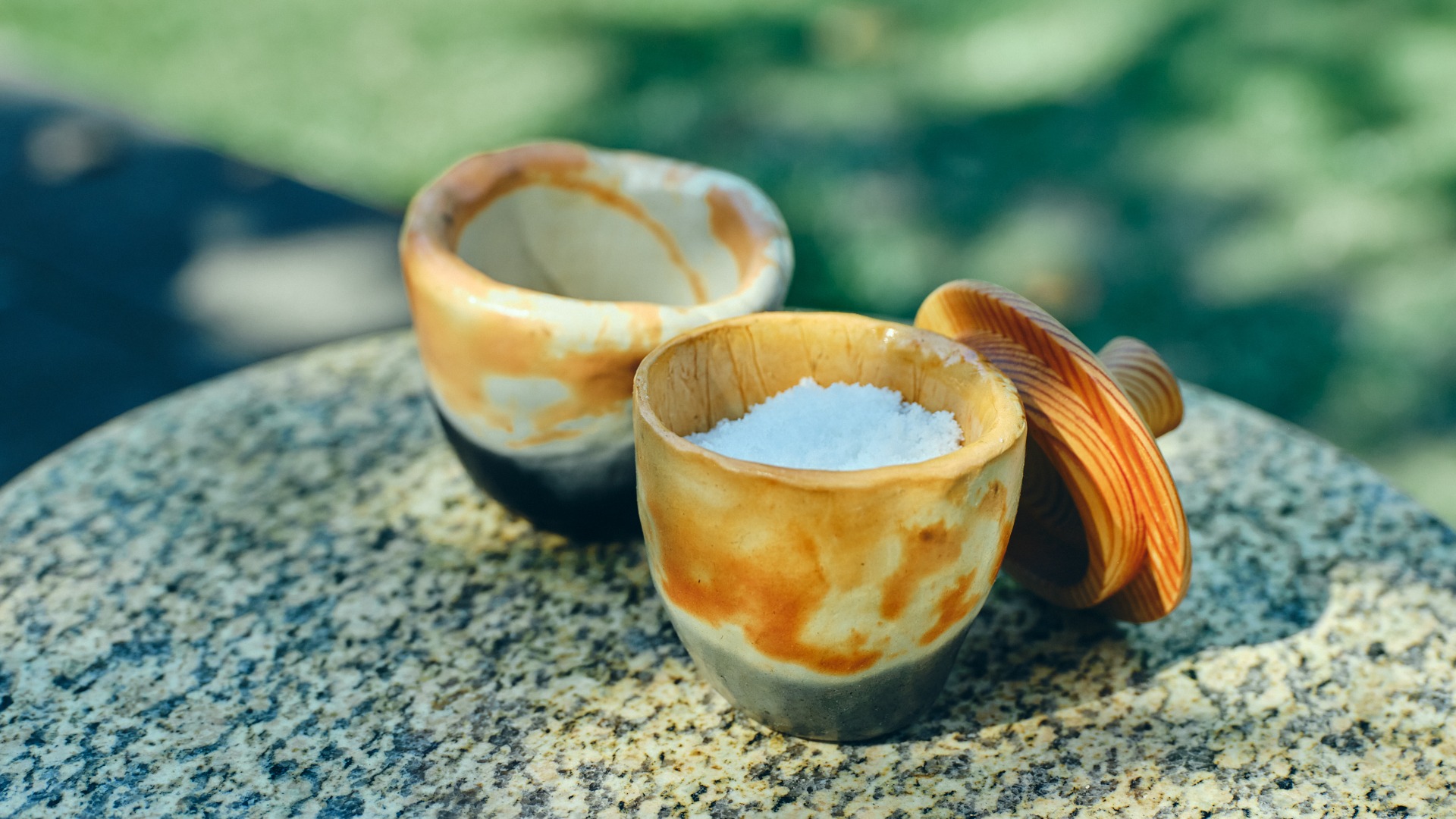Introduction
Welcome to Gwangjang Market, a culinary treasure nestled in the heart of Seoul! Established in 1905, this iconic market has become a must-visit destination for food lovers and tourists alike. With its vibrant atmosphere and rich history, Gwangjang Market offers a unique glimpse into the Seoul food scene, showcasing a delightful fusion of traditional and modern Korean cuisine. From sizzling street food to artisanal snacks, every corner of this bustling market invites you to embark on a flavorful adventure.
Discovering Gwangjang Market: A Foodie’s Paradise
As you step into Gwangjang Market, you’re immediately enveloped by the intoxicating aromas of sizzling pancakes, savory dumplings, and sweet treats wafting through the air. The lively chatter of vendors and the clinking of utensils create a symphony of sounds that perfectly complements the vibrant sights around you. This market is not just a place to grab a bite; it’s an experience that brings together locals and travelers, all eager to savor authentic Korean flavors.
The market is a true foodie’s paradise, with over 100 years of history woven into its stalls. Here, you can sample an array of traditional dishes, from crispy Bindaetteok (mung bean pancakes) to spicy Tteokbokki (rice cakes), each telling a story of Korea’s culinary heritage. Gwangjang Market is where you’ll find the heart and soul of Korean food culture, making it an essential stop for anyone looking to explore culinary adventures in Seoul.
What sets Gwangjang Market apart is its unique blend of the old and the new. While it maintains its traditional charm, the market has also embraced modern trends, making it a hotspot for food enthusiasts seeking both authenticity and innovation. Whether you’re a seasoned traveler or a first-time visitor, Gwangjang Market promises a culinary journey like no other.
Historical Significance of Gwangjang Market: A Culinary Heritage
Gwangjang Market isn’t just a feast for the senses; it’s a living history book, dating back to its establishment in 1905. Originally set up as a trading hub for textiles, it has transformed over the decades into a culinary haven that reflects the dynamic evolution of Korean food culture. The market played a pivotal role in the local economy, providing a space for vendors to showcase their goods and for families to gather over shared meals. As you stroll through the market, you can almost hear the echoes of bustling trade from a century ago, where vendors would call out to passersby, enticing them with their wares.
Long-time vendors often recount stories of their families’ legacies intertwined with the market. One vendor, Mr. Kim, has been serving his famous Bindaetteok for over 30 years. He shares that his grandmother taught him the recipe, which has been passed down through generations. “It’s not just food; it’s tradition,” he says, his eyes twinkling with pride. Such anecdotes enrich your visit, making each bite a taste of history.
Today, Gwangjang Market stands as a symbol of resilience and adaptation. It has embraced modernity while holding onto its roots, making it a fascinating spot for anyone interested in the intersection of history and cuisine. So, as you savor your Tteokbokki or Sundae, remember that you’re partaking in a culinary journey that spans over a century!
Must-Try Dishes at Gwangjang Market: A Food Lover’s Checklist
Ready to tantalize your taste buds? Gwangjang Market is a treasure trove of deliciousness just waiting to be explored. Here’s a checklist of must-try dishes that will have you coming back for seconds (and thirds!).
Bindaetteok (Mung Bean Pancakes)
This crispy delight is a staple at Gwangjang Market. Made from ground mung beans, it’s pan-fried to golden perfection and often served with a side of soy sauce. Look for Yoon’s Bindaetteok, where the pancakes are made fresh right in front of you!
Sundae (Korean Blood Sausage)
Don’t be afraid to try this unique dish! Sundae is made from pig’s intestines stuffed with a mixture of sweet potato noodles, vegetables, and blood. It’s a beloved comfort food for many locals. Head over to Jinju Sundae for an authentic experience.
Mayak Gimbap (Addictive Rice Rolls)
These small rice rolls are packed with pickled vegetables and a hint of sesame oil, making them the perfect snack. They’re so good that they’ve earned the nickname “addictive.” You can’t go wrong at Chungmu Gimbap, where the rolls are freshly made and absolutely delicious!
Tteokbokki (Spicy Rice Cakes)
For those who love a kick, Tteokbokki is a must-try! These chewy rice cakes are tossed in a spicy gochujang sauce, making for a perfect street food treat. Gwangjang Tteokbokki is a popular stall where you can enjoy a steaming bowl of this fiery goodness.
Yukhoe (Raw Beef Tartare)
Feeling adventurous? Yukhoe is a dish of raw beef seasoned with sesame oil, garlic, and spices, often topped with a raw egg. It’s a delicacy that’s sure to impress! Visit Yukhoe House for a fresh and flavorful experience.
Hotteok (Sweet Pancakes)
Finish your culinary journey with a sweet treat! Hotteok are filled with a mixture of brown sugar, honey, nuts, and cinnamon, then fried to create a crispy exterior and gooey interior. Seongbukdong Hotteok is a must-stop for this delightful dessert.
With this checklist in hand, you’re all set for a food adventure at Gwangjang Market! Each dish is a delightful representation of Korean cuisine, so don’t hesitate to try them all!
Gwangjang Market Vendors: The Faces Behind the Food
The heart of Gwangjang Market lies in its vendors, each with a story to tell and a recipe to share. These passionate individuals dedicate their lives to bringing authentic Korean flavors to the forefront.
Take a moment to chat with the vendors; they love sharing their culinary journeys! For instance, Mrs. Lee, who runs a popular Hotteok stall, has been perfecting her recipe for over 20 years. “It’s all about the balance of sweetness and texture,” she says, smiling as she flips the pancakes. Her enthusiasm is infectious, and you can taste the love in every bite!
Another vendor, Mr. Park, specializes in Sundae. He explains that his family has been in the business for generations, and he takes pride in using only the freshest ingredients. “We believe in quality,” he insists, as he prepares a fresh batch right before your eyes.
These vendors not only serve food; they create an experience. Their dedication to their craft adds a personal touch to your culinary adventure. So, take the time to appreciate the faces behind the food; they are what make Gwangjang Market truly special!
Gwangjang Market Street Food: A Culinary Adventure
Street food at Gwangjang Market is a vibrant experience that tantalizes the senses. As you wander through the stalls, the sights and sounds of sizzling food and happy chatter fill the air. This is where the magic happens!
For the best experience, keep an eye out for busy stalls; they often indicate delicious food! Don’t hesitate to try a little of everything—most vendors are happy to offer samples. Just remember to carry some cash, as many stalls operate on a cash-only basis.
While indulging in street food, safety is key. Look for stalls that maintain cleanliness and have a steady flow of customers. It’s a good sign that the food is fresh and popular!
Personal stories from visitors often highlight the thrill of trying something new. One traveler recalls her first bite of Tteokbokki: “The heat hit me first, but then the flavors exploded! I couldn’t stop smiling!” Such moments make Gwangjang Market a must-visit for food enthusiasts.
Cultural Experience at Gwangjang Market: More Than Just Food
Gwangjang Market offers more than just a culinary journey; it’s a cultural hub teeming with activities. As you explore, you’ll find opportunities to immerse yourself in Korean traditions. Ever fancied trying on a hanbok? Several shops in the market offer hanbok rentals, allowing you to dress up and capture the perfect photo amidst the market’s lively backdrop.
Additionally, you can discover traditional crafts, from handmade pottery to beautiful textiles. Many vendors are eager to share their craft and the stories behind their creations. It’s a wonderful way to connect with the local culture!
Engaging in these activities not only enriches your visit but also gives you a deeper appreciation for the vibrant culture of Korea. So, don’t miss out on these cultural experiences while you savor the delicious food!
Practical Information for Travelers: Your Gwangjang Market Guide
Ready to visit Gwangjang Market? Here’s everything you need to know to make the most of your trip!
Opening Hours: The market is generally open from 9 AM to 11 PM, but it’s best to visit during lunchtime or early evening when the stalls are bustling with activity.
Location: Gwangjang Market is conveniently located near Jongno 5-ga Station (Line 1). Just a short walk from the station, you’ll find yourself amidst the delicious chaos of the market.
Accessibility: The market is primarily pedestrian-friendly, but be mindful of crowded areas. Wheelchair access may be limited in some parts, so plan accordingly.
For first-time visitors, consider joining a food tour for insider tips and recommendations. You can find tours that focus on the best dishes and hidden gems within the market. It’s a fantastic way to explore while ensuring you don’t miss out on any must-try foods!
Seasonal Travel Insights: What to Expect Throughout the Year
Gwangjang Market is a dynamic place that changes with the seasons. Each time you visit, you’ll find unique dishes and events that reflect the time of year.
In spring, look out for fresh produce and seasonal specialties. Vendors often showcase dishes made with spring ingredients, adding a burst of freshness to your meal. Summer brings refreshing treats like Sikhye (sweet rice drink) to help you cool off.
Autumn is a fantastic time to enjoy hearty dishes, with many vendors featuring seasonal flavors in their offerings. And don’t miss winter! Warm up with comforting bowls of Jjigae (stew) or hot Hotteok to beat the chill.
Festivals and events are also a highlight, with special promotions and unique dishes popping up throughout the year. Keep an eye on the market’s calendar for exciting happenings!
Shopping at Gwangjang Market: A Treasure Trove of Local Goods
While Gwangjang Market is famous for its food, it’s also a fantastic place to shop! Explore stalls filled with vibrant textiles, traditional crafts, and unique souvenirs. From silk scarves to handmade pottery, you’re sure to find something special to take home.
Don’t forget to check out the vintage clothing section, where you can score some unique fashion pieces that tell a story. Many of these items are one-of-a-kind, making them perfect for those who appreciate a bit of history in their wardrobe.
Shopping at Gwangjang Market is not just about purchasing items; it’s about connecting with local artisans and understanding their crafts. So take your time to explore, chat with vendors, and discover the treasures hidden within this bustling market!
Safety and Health Guidelines for Enjoying Gwangjang Market
Your safety and health are paramount while exploring Gwangjang Market. Here are some tips to keep in mind:
- Wash your hands before eating. Many stalls provide hand sanitizers, so don’t hesitate to use them!
- Choose busy stalls where food is prepared fresh. This often indicates higher turnover and fresher ingredients!
- Stay hydrated, especially during the summer months. Grab a refreshing drink from one of the many stalls.
- If you have food allergies, communicate with vendors about your dietary restrictions to ensure a safe experience.
By following these simple guidelines, you can fully enjoy the culinary delights of Gwangjang Market without worry.
Commonly Asked Questions (FAQs) About Gwangjang Market
Curious about Gwangjang Market? Here are some common questions that visitors often have:
What’s the best time to visit Gwangjang Market?
The market is lively throughout the day, but visiting during lunch or early evening will give you the best experience with plenty of food options and bustling vendors.
Are the food stalls cash-only?
Yes, many stalls operate on a cash-only basis, so it’s wise to bring cash to avoid any hiccups while tasting delicious treats!
Can I find vegetarian or vegan options at Gwangjang Market?
While many dishes contain meat, there are vegetarian-friendly options available, such as Bindaetteok and various vegetable side dishes. Just ask the vendors for recommendations!
Is Gwangjang Market family-friendly?
Absolutely! The market is a great place for families to explore together, with plenty of kid-friendly snacks and activities. Just keep an eye on little ones in the bustling crowds!
These FAQs should help you prepare for your visit, ensuring you have a fantastic time at Gwangjang Market!
Fun Facts About Gwangjang Market: Did You Know?
As you wander through Gwangjang Market, impress your friends with these fun facts:
- Gwangjang Market is one of the oldest traditional markets in Korea, with over 100 years of history!
- The market was originally established as a textile market before evolving into the food haven it is today.
- It’s a popular spot for Korean dramas and variety shows, often showcasing its vibrant atmosphere and delicious food!
- The name “Gwangjang” translates to “light market,” symbolizing the bright future it has embraced since its inception.
These tidbits add a layer of charm to your visit, making your experience even more memorable!
Gwangjang Market is a culinary gem that captures the essence of Seoul’s food culture. From mouthwatering dishes to vibrant vendors and rich history, it’s a place that invites you to savor every moment. So grab your friends, bring your appetite, and get ready to explore this bustling market! Whether you’re a seasoned foodie or a curious traveler, Gwangjang Market promises an unforgettable experience that will leave you craving more.





















